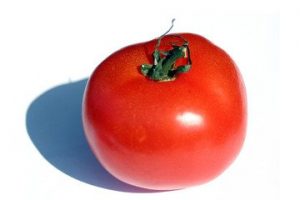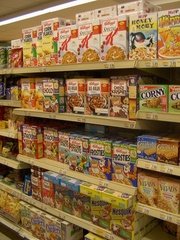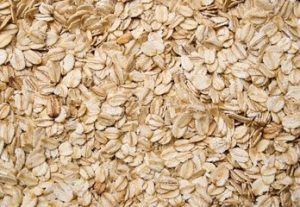I usually do the grocery shopping, and I typically go on my way home from work. Needless to say, we make an effort to buy healthier choices. But I’ve noticed lately, that the most innocent items on our shopping list are becoming a real challenge.
This past Wednesday I went to the grocery store and it seemed like this would be quick and easy trip. After all, the list was clean, organized and the items we needed were pretty basic. Among the items on the list were tomato paste, healthy cereal, oatmeal, yogurt, instant soup, and cookies for the grandchildren for Shabbos.
Let’s go shopping!
Tomato paste:
I arrived at the store and began shopping. When I got to the section of tomato sauces and tomato pastes, I picked up several containers only to find that a product I used to buy without ever checking the ingredients was now problematic. What used to be simply crushed up tomatoes and some added salt (and I always buy the brand with the least added salt), now contains sugar and fructose added to the mix. After searching and searching, I did find a different brand with only the two original ingredients. I hope the store continues to carry that brand! Beware of what you think is just plain tomato paste—it might contain things you don’t really want to consume. Some of these ingredients can be harmful to your health and can negatively affect your weight.
Cereal:

I then made my way over to the breakfast cereals. I noticed that the front of most of the cereals boxes say, “A whole grain product” or “Heart Healthy whole grains included,” “Low fat-low sugar.” As I examined each box, unfortunately I saw that really these cereals were not the best for a healthy choice.
One group of cereals was indeed whole grain and low fat, but full of sugar. Some were whole grain and low sugar, but high in fat. Some that said “Only natural ingredients” were high in calories. I found the cereals that I always try to stick with. Nothing like good old shredded wheat—nothing but whole wheat, no sugar and just a touch of salt. I personally put in a handful of raisins and some milk and it is a filling and nutritious breakfast.
Oatmeal:

On the other side of the aisle, I went to get the oatmeal. I always buy the raw oats in a can or vacuum-packed container. But I couldn’t help notice the convenient single serve packages that were there. They come with different flavorings. It didn’t’ take me long to put down the box. Not only was their sugar in high amounts in the packets, there were also different kinds of sugars and all kinds of flavorings and flavor enhancers that can be detrimental to health in many different ways.
Yogurt:
 Next, I ventured over to the dairy section for yogurts. Today there is a wide variety of yogurts. You might see Greek yogurt, low fat yogurt, no fat yogurt, bio yogurt, probiotic yogurt, and even more. Yogurt should be a healthy food, but by time the manufacturers finish with it, yogurt can turn into a high calorie, unhealthy item. Yogurt is a great dairy protein that can be enjoyed even by those who are lactose intolerant. It keeps your digestive system in good working order. But watch out! More than half the yogurts I looked at had substantial amounts of sugars added and were much higher in calories than you would think. This was particularly true of the low-fat variety. Remember, when you buy something that has some fat in it, there is a likelihood of a lot less sugar or maybe no sugar at all. The best buy? Get a plain unsweetened yogurt (Greek if you like that texture) and it is okay if it has some fat in it—even 3% is just fine. You can add a little fruit of a little bit of granola to it and have a really tasty, healthy and filling snack or meal.
Next, I ventured over to the dairy section for yogurts. Today there is a wide variety of yogurts. You might see Greek yogurt, low fat yogurt, no fat yogurt, bio yogurt, probiotic yogurt, and even more. Yogurt should be a healthy food, but by time the manufacturers finish with it, yogurt can turn into a high calorie, unhealthy item. Yogurt is a great dairy protein that can be enjoyed even by those who are lactose intolerant. It keeps your digestive system in good working order. But watch out! More than half the yogurts I looked at had substantial amounts of sugars added and were much higher in calories than you would think. This was particularly true of the low-fat variety. Remember, when you buy something that has some fat in it, there is a likelihood of a lot less sugar or maybe no sugar at all. The best buy? Get a plain unsweetened yogurt (Greek if you like that texture) and it is okay if it has some fat in it—even 3% is just fine. You can add a little fruit of a little bit of granola to it and have a really tasty, healthy and filling snack or meal.
Instant soup:
I knew this coming week was going to be hectic, so even though it is rare, I looked at the instant soups. You just add hot water, let it sit for 4 minutes and you have a meal. Oh no! Look what’s in this! MSG and a lot of sugar. So then I looked at a different one and the front of the container flashed “No MSG.” Okay, I thought, I found what I’m looking for. Yet this one was also filled with sugar and was high in salt and other flavor enhancers. I continued to search and found one that was imported from abroad. No MSG, no sugars added. By the way, when I actually ate it the next day, it was very satisfying. Who needs all those additives anyway?
Cookies:

Finally, I went to find a Shabbos treat for my grandchildren. When looking at the cookies, I saw a whole section of healthy cookies and cakes. What does “healthy” mean? The packages all said no sugar, made with whole grains, only natural ingredients. When I looked at the ingredients, I either saw artificial sweeteners or hydrogenated oils. Artificial sweeteners can cause health problems and trans-fats do cause heart disease. Thank goodness this year the United States has officially banned the use of trans-fats. We are all hoping other countries will follow suit. Beware that any hydrogenated oil becomes a trans-fat. Avoid it at all costs. If the kids are old enough, popcorn might be a better alternative anyway.
It’s not what it seems
Research tells us that people think foods with front-of-package health claims (“rich in omega-3,” “supports immunity,” “low-fat,” etc.) have fewer calories and are better for health. This phenomenon is known as the “health halo effect.” It’s an area extensively studied by Brian Wansink, PhD, a marketing professor and behavioral economics expert at Cornell University in New York. Front-of-package claims “cause us to believe the food product is much healthier than it actually is,” says Wansink. Health-claim labels like “free-range, gluten-free, pesticide-free” and “antioxidant-laden” cause consumers to think, “The more [of this food] we eat, the better.” People typically eat 44% more when there is a health claim on the front label, Wansink adds.

The practical effects of the health halo effect have been summarized by author Marion Nestle, PhD, MPH, a professor of nutrition, food studies and public health at New York University. She stated, “Health claims sell food products. People like buying products with a ‘health aura,’ no matter how poorly the health claim is supported by science. Science is irrelevant here–marketing is what’s relevant.” What’s the end result? Consumers usually believe front-of-package claims, perceive them to be government-endorsed and use them to ignore the more evidence-based Nutrition Facts Label on the back or side of the packaging (Nestle & Ludwig 2010).
The bottom line
It pays to be an educated and smart grocery shopper. Find out where the health traps are. Food manufacturers’ bottom line is selling products and being able to manufacture them as cheaply as possible, even if it cost you your health. They will fool you with healthy looking slogans but read the side panels and back of the box, bag, container, or can of the food you are thinking of purchasing. As food journalist Michael Pollin wrote in some of his books, if you can’t pronounce the ingredients or if they didn’t exist when your grandmother was alive, you might think twice about purchasing the product. Remember that sugars come in many forms and high fructose corn syrup is especially harmful to your health. Trans-fats are on the way out, but they are still around and they do cause heart disease. Eating some fat can be a good thing, especially when the low fat product has more sugar (as most of them do) than the fattier version.
Before you go shopping, be up to date on what good nutrition is. Being a vigilant consumer will “add hours to your day, days to your year and years to your life.”

Great article, thanks! Straight to the back or side of the container!
I’d really like to know what brand of instant soup you chose. The ones I see have extreme amounts of sodium so I avoid them.
I dont use instant soup, but I do know there are some without MSG and lower in salt
Very good reminder to scrutinize the ingredients in the foods despite the claims on the label! Thank you very much.